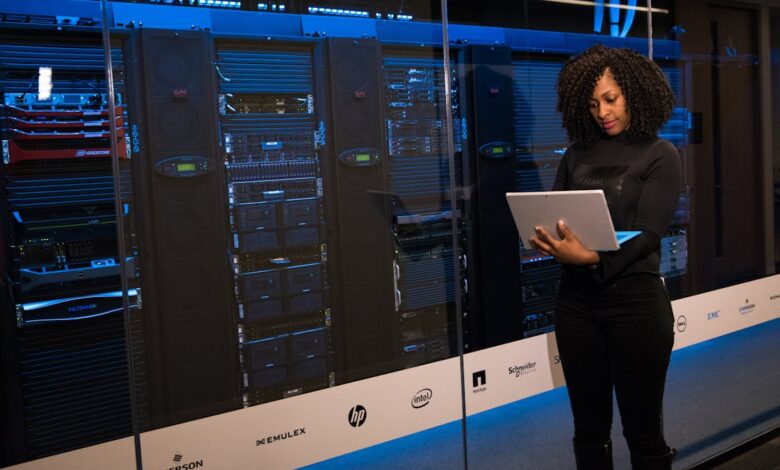The Benefits and Uses of Infrared (IR) Thermography

Infrared (IR) thermography is a powerful diagnostic tool used across a variety of industries to detect temperature variations in objects and systems. By capturing infrared radiation emitted by objects, thermography allows professionals to visualize temperature differences that are otherwise invisible to the naked eye. These temperature differences can indicate potential problems, inefficiencies, or areas of concern, making IR thermography an invaluable method for preventive maintenance, quality control, and troubleshooting. In this article, we will explore the many benefits and applications of IR thermography, highlighting why it has become an essential technology in modern industries.
How Infrared Thermography Works
Infrared thermography works by detecting infrared energy emitted from an object and converting it into a temperature reading. All objects above absolute zero (-273.15°C) emit infrared radiation, with hotter objects emitting more energy. Thermographic cameras are designed to detect this infrared energy and translate it into a detailed thermal image or “thermogram.” This thermal image provides visual insight into temperature patterns, showing warm areas in bright colors and cooler areas in darker shades. Unlike traditional thermometers, which provide a single-point temperature reading, thermography allows for a comprehensive surface scan, making it possible to detect temperature inconsistencies across an entire system or structure.
The Benefits of IR Thermography
The benefits of using IR thermography extend far beyond its ability to visualize heat. One of the key advantages is its non-contact, non-invasive nature. This means that thermography can be performed from a distance, making it ideal for inspecting dangerous, inaccessible, or sensitive areas without the need to shut down systems. Moreover, IR thermography provides real-time results, allowing for immediate diagnosis and analysis. This rapid feedback is particularly valuable in industries where time-sensitive decisions are necessary. Another major benefit is its ability to detect potential problems before they lead to costly failures. By identifying thermal anomalies early, businesses can perform preventive maintenance and avoid breakdowns, reducing downtime and operational costs.
Common Applications in Maintenance
One of the most common uses of IR thermography is in predictive maintenance, particularly in industries such as manufacturing, energy, and construction. In these fields, thermographic inspections can be conducted on equipment and electrical systems to detect overheating components, loose connections, or failing parts. For example, motors, bearings, and electrical panels can all be monitored using advanced IR thermography to identify areas where excessive heat buildup may indicate impending failure. Detecting these issues early allows technicians to address them before a costly breakdown occurs. Additionally, in the energy sector, thermography is frequently used to inspect solar panels, transformers, and high-voltage equipment, ensuring they operate efficiently and safely.
Infrared Thermography in Building Diagnostics
In the construction and real estate industries, IR thermography is a valuable tool for building diagnostics. It can detect issues like moisture intrusion, insulation deficiencies, and air leaks, all of which can contribute to energy inefficiency and structural damage over time. By identifying areas where heat is escaping or moisture is entering, thermographers can pinpoint the exact locations of leaks or insulation failures, allowing for targeted repairs. This not only improves the energy efficiency of a building but also helps to prevent costly damage from mold growth or rot. Furthermore, IR thermography can be used to assess roofing systems and detect hidden water damage, ensuring that necessary repairs are made before extensive deterioration occurs.
IR Thermography in Healthcare and Medical Research
Beyond industrial and building applications, IR thermography is also used in the healthcare sector. Its ability to detect temperature variations in the human body makes it a useful tool in medical diagnostics. For instance, thermography can help detect inflammation, circulatory issues, or abnormal thermal patterns associated with tumors. In recent years, IR thermography has been explored as a non-invasive method to detect breast cancer by identifying heat differences caused by increased blood flow in abnormal tissue. Although it is not a replacement for mammography or other traditional methods, it offers a complementary approach that may aid in early detection. Furthermore, thermography is used in veterinary medicine to detect injuries or abnormalities in animals, as it provides a safe, non-invasive method to assess their health.
Environmental Monitoring and Research
IR thermography also plays a critical role in environmental monitoring and research. In wildlife conservation, for instance, it is used to observe nocturnal animals or detect heat signatures from endangered species without disturbing their natural habitat. Researchers can use thermography to study animal behavior, monitor changes in temperature patterns due to climate change, or assess vegetation health by detecting areas of thermal stress. In agriculture, thermography is employed to monitor crop health and identify irrigation inefficiencies, enabling farmers to optimize water use and prevent crop loss. In addition, it is used in environmental assessments to detect heat leaks or energy inefficiencies in industrial facilities, helping to reduce carbon emissions and improve sustainability practices.
Infrared thermography is a versatile and effective technology with a wide range of applications across numerous industries. From maintenance and building diagnostics to healthcare and environmental research, IR thermography offers a non-invasive, real-time solution for detecting and analyzing temperature variations. Its ability to reveal hidden issues before they escalate into significant problems makes it a vital tool for preventive maintenance and cost reduction. As industries continue to prioritize efficiency and sustainability, the demand for IR thermography is likely to grow, solidifying its role as an essential tool in modern diagnostics and monitoring.
